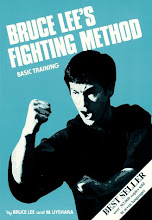Say the word "taiji", and most of us immediately imagine
qualities like soft, slow, tranquil, graceful, and flowing. So
when peoplesee performances of taiji quan which include
quick movements and power,they ask me "Is this right? Is
this really taiji?"To clear up the question, we must first clear
up our minds. To beginwith, taiji quan originally was a martial
art. To some people, it still is. Speed is a basic, fundamental
requirement of any martial art style. Martial artists must
issue power and power means hardness. Therefore any
taiji quan still practiced as a martial art will include quick
movements which issue power.
Change the focus from ancient Chinese martial art to universally
beneficial health exercise, and you now have a choice: a) slow, soft
movements only or, if physical condition and ability allow, b) a
combination of soft and hard, quick and slow. For a health-oriented
practice, either way is right, neither is wrong. Secondly, Chinese
kung fu is a very matured art and taiji quan a sophisticated style.
So most of the time taiji quan requires practitioners to move very
differently than in their daily lives at work and play. During the
early stages of training, therefore, we must wash away our old
habits of movement. Since old habits die hard, this becomes a
serious issue. Daily practice is an indispensable first step but it is
not enough . Practicing the entire form at a relaxed, slow pace
places us in a much better position to spot our problems and correct
our movements. Of course it's not impossible to do this at a quick
speed, but it is a lot more difficult.
The soft, relaxed pace of taiji quan also influences our internal
practice. When we execute a form with speed, we will quite naturally
--even subconsciously--try to put power into our movements. This
power, however, is of the raw, ordinary, daily-life, muscle strength
variety. It can increase only to a certain level. A punch of this type,
or instance, is pretty much as strong as our arm. It does not use
every part of the body to deliver its force. In other words, it's not
taiji quan power. That's why soft practice is so important. While slow
practice unveils our weaknesses, inconsistencies, and errors, soft
practice allows us to let go of our old ways of generating strength
and delivering power. And we must let go before we can move ahead.
As students, we should try to approach our taiji quan like babies. It
should seem like a mysterious, interesting new world to explore. Our
eyes must be fresh, our minds open, our bodies willing to learn a
totally new way to move. Our education starts anew in order to lead
us to the taiji quan way to issue power. This is why in the beginning
it's very important to execute the movements so softly--as if we
have no power at all.
Quite naturally, the majority of people in sports or movement arts
are at the beginning levels of skill.A much smaller group progresses
to the intermediate levels, even fewer are advanced, and only a tiny
percentage approach real mastery. So most of the taiji quan we see
in parks, community centers, and schools is at the elementary
levels. Perhaps this explains why everyone thinks taiji quan should
only be slow and soft. There are many components to a full tajiji
quan training program--for example, basics, forms, breath, forces,
posture, two-person sensitivity, and usage. As students advance to
higher levels, their training changes. New exercises may be
introduced, old ones modified,and the way students practice the
exercises must also progress. Changes in speed are introduced,
limited at first to a few movements in the form to give students a
taste. Later on, they learn to issue power in more and more of the
moves. Chen taiji quan has a famous first form, the lao jia
(Old Form), which contains some quick movements, punches, and
several different kicks--including a double jump kick. Its punches
even issue power. Chen style also has a lesser known second form
called Cannon Fist. As the name implies, the punches are delivered
with the speed, force, and intent of a fired cannon. Nowadays people
think of speed and power-issuing as trademarks of Chen style. Some
even use them as criteria to determine if a performance is Chen
or Yang. Not true! They are natural ingredients of the original art
of taiji quan.









0 comments:
Post a Comment